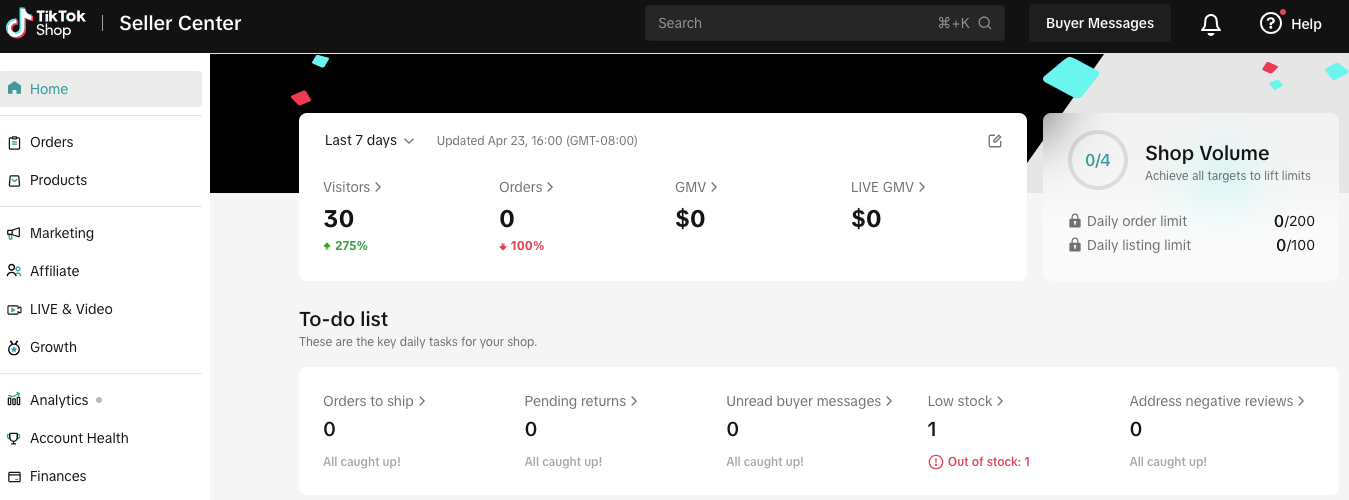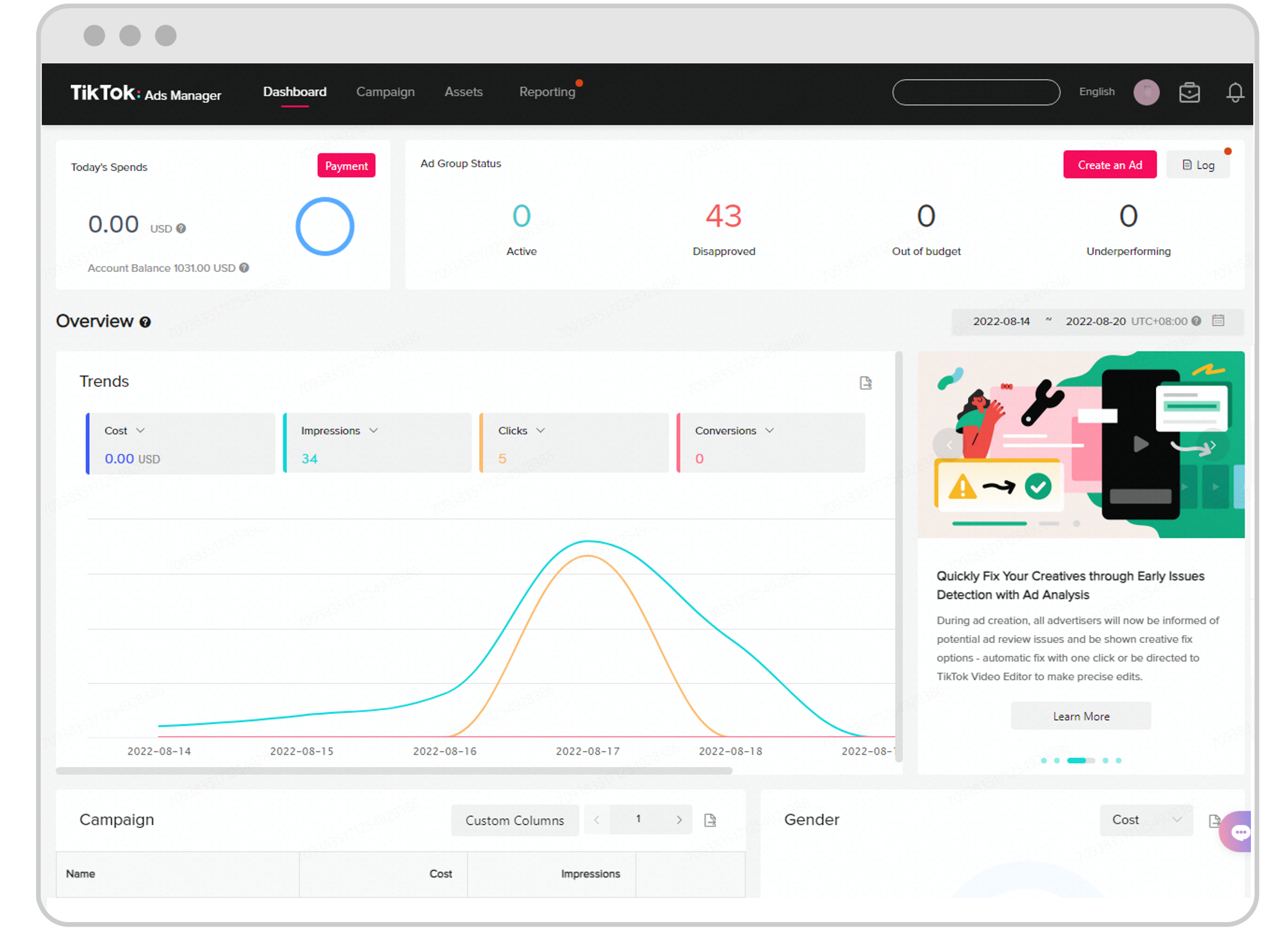TikTok Shop – will the new online sales function revolutionize the eCommerce market?
Table of Contents:
- Screen Time
- What is TikTok Shop?
- TikTok Shop Benefits for eCommerce
- Content Recommendation
- The Role of Influencer Marketing
- Is TikTok Shop Available in Poland?
- TikTok Shop Success Example in Foreign Markets
- Integration with Traditional eCommerce Platforms
- Costs of Using TikTok Shop
- A New Opportunity for Online Sales Development
TikTok, the fifth-largest social media platform in the world by active users (datareportal.com), has evolved from an app dominated by entertainment content to a channel that genuinely supports sales. Today, it's increasingly boldly entering the eCommerce space, offering solutions attractive to both large brands and smaller D2C entities.
According to 2025 data, TikTok has over 1.59 billion monthly active users. The largest share of this market belongs to the United States with 135.79 million users (demandsage.com). In Poland, between 11 and 13 million people use the app (sotrender.com).
The reach, content format, and audience engagement mean that the platform is no longer just an entertainment medium, but increasingly becomes a place where purchasing decisions are made.
From an eCommerce perspective, presence on TikTok is not only a way to promote, but also a real opportunity for conversion directly within the app.
Screen Time
While it might seem that user engagement on social media is difficult to capture, the time spent on platforms becomes its clearest indicator, and thus a measure of the advertising potential of a given application.
From a data perspective, differences between genders are minimal: women use social media for an average of 2 hours and 2 minutes daily, men - 1 hour and 58 minutes. Children aged 7-14 spend the most time in front of screens, with their daily average activity time on social media being as much as 3 hours and 24 minutes. In the 15-24 age group, this time is 2 hours and 46 minutes. In subsequent age ranges, this time gradually decreases: people aged 25-34 spend 2 hours and 8 minutes daily on platforms, while users in the 35-44 age group spend 1 hour and 36 minutes. The least active are internet users aged 55–75, dedicating an average of 1 hour and 29 minutes daily to social media (gemius.com).
Importantly, it's precisely the high level of engagement among the youngest users that makes TikTok an exceptionally attractive channel for reaching out - both for brands and sellers. The platform becomes a natural environment for developing direct sales within the app.
What is TikTok Shop?
TikTok Shop is a functionality that enables product purchases directly from within the app - without the need to redirect to external shopping websites.
Brands can present their offerings in the form of short videos or live streams, and users can make purchases without leaving the app. This combination of entertainment and shopping functions redefines the way consumers discover and purchase products online.
 https://growmojo.com/tiktok-seller-center-top-features-and-products-set-up-steps/
https://growmojo.com/tiktok-seller-center-top-features-and-products-set-up-steps/
TikTok Shop Benefits for eCommerce
TikTok Shop, as an extensive sales ecosystem, is an attractive tool for both large companies and smaller online stores. A key advantage is the shortened purchasing path - from product interest to transaction completion, which directly translates to increased conversions.
The platform offers access to promotional campaigns and advertising tools (TikTok Shop Ads), enabling reach to precisely defined target groups. Additionally, the affiliate program supports brand collaboration with creators, which strengthens message authenticity and increases community engagement.
An important complement is the ready-made integrations and operational tools available in the TikTok Shop App Store. Thanks to these, sellers can effectively manage products, orders, and logistics – all within one social commerce sales environment (business.tiktokshop.com).
What does TikTok Shop offer online sellers?
- Simplified purchasing process.
- Campaigns and advertising tools.
- Affiliate model based on creator collaboration.
- Ready-made integrations and operational solutions.
Content Recommendation
The TikTok Shop recommendation system works on principles similar to the "For You" algorithm and is a key element influencing sales effectiveness. Its task is to dynamically match product content to user preferences, which increases the chance of conversion.
The recommendation algorithm is based on three pillars:
- User interactions - including adding products to cart, video viewing time, comments, likes.
- Content information - video quality, search matching, descriptions and reviews.
- Technical and contextual data - location, language, device type, time zone.
Products are promoted in various sections of the app: from video recommendations, through the "Shop" tab, to search results. Marking content as advertising provides additional priority in visibility ranking.
From sellers' perspective, this means the ability to reach potential customers precisely when they are ready to buy – without needing to leave the app. TikTok Shop is thus beginning to play the role not only of a sales channel, but also an effective performance marketing tool (support.tiktok.com).
 https://ads.tiktok.com/business/en-GB/blog/how-to-view-campaign-performance-tiktok-ads-manager
https://ads.tiktok.com/business/en-GB/blog/how-to-view-campaign-performance-tiktok-ads-manager
The Role of Influencer Marketing
From the perspective of sales trends, influencer marketing has been gaining importance for years, and TikTok only accelerates this transformation. According to Influencer Marketing Hub data, global spending on internet creator collaboration exceeded $24 billion in 2024. Forecasts for 2025 already indicate a level of $34.2 billion (wpbeginner.com).
TikTok Shop additionally strengthens influencers' position as a key sales channel. Thanks to native video formats, live streams, and a built-in affiliate program, creators become a natural link connecting brands with audiences. This shifts emphasis in budget strategies, causing more funds to flow not to classic display formats, but to creative campaigns realized in collaboration with influencers.
Importantly, the development of artificial intelligence additionally drives this process. This technology today allows automatic matching of creators to appropriate target groups, estimating return on investment, and personalizing communication in real-time. As a result, influencer marketing becomes not only more effective, but above all measurable and scalable.
For companies that haven't yet included this channel in their activities, this is the last moment to start treating it strategically – before the competition does.
Is TikTok Shop Available in Poland?
Currently, TikTok Shop is not yet operating in the Polish market. The service is already operating in selected Asian countries, the United States, and in Europe - initially it was available in the United Kingdom, and from March 2025 it's also in France, Germany, and Italy.
According to the XYZ portal, the introduction of this function in Poland is set to launch no later than the first half of 2026 (xyz.pl).
It's worth taking care of brand presence on TikTok today, testing collaboration formats with creators, and preparing technological infrastructure for TikTok Shop implementation in the future.
TikTok Shop Success Example in Foreign Markets
In markets where TikTok Shop has been operating for a longer time, there's no shortage of examples of its high effectiveness. Cosmetics brand Made by Mitchell (MBM) generates as much as 60% of total sales precisely through this function – mainly thanks to live streams and influencer collaborations. Meanwhile, other companies from the beauty and fashion segments in the UK and USA declare that even 40–50% of orders currently come from TikTok (businessoffashion.com).
PUMA brand, thanks to investment in Shop Ads, creator collaboration, and product offering development, recorded a 737% week-to-week GMV increase, with as much as 60% of this value generated through affiliation, and daily GMV increased by 182% (business.tiktokshop.com).
Meanwhile, SharkNinja brand, during the Brand Day campaign, achieved an 818% sales increase in one day, a 6,212% increase in live stream views, and 217% engagement growth on short videos (seller.tiktokglobalshop.com).
This shows that TikTok Shop genuinely supports sales for both well-known brands and smaller brands, provided the potential of video formats, community, and dynamic live commerce tools is skillfully utilized.
Integration with Traditional eCommerce Platforms
TikTok Shop doesn't constitute an alternative to online stores – it rather serves a complementary function, fitting into an omnichannel sales strategy. In mature markets, such as the UK or United States, sellers increasingly integrate TikTok Shop with existing eCommerce systems, including Shopify, WooCommerce, or Magento, synchronizing inventory levels, product descriptions, and orders.
The availability of integrations through TikTok's official App Store or dedicated partner solutions significantly simplifies multi-channel sales management. Thanks to this, TikTok Shop becomes another cohesive element in the online sales structure, without the need to abandon existing solutions.
Costs of Using TikTok Shop
TikTok Shop's commission model varies depending on the market, which significantly affects sales profitability calculations. For example, in the United Kingdom, since September 2024, a 9% sales commission rate applies – previously it was 5% (tiksly.com).
However, the platform offers the possibility of reducing costs through the "Seller Missions" program, e.g., by completing a specified number of live streams.
In the United States, the model was initially more encouraging: for the first 90 days, the commission was 1.8% + $0.30 per transaction. Then it increased to 5–8% + $0.30 (statuo.co.uk).
From brands and sellers' perspective, this means the necessity of detailed analysis of conditions offered by the platform – especially in the context of planning long-term TikTok Shop presence strategy.
A New Opportunity for Online Sales Development
TikTok Shop fits perfectly into the trend of blurring boundaries between entertainment and commerce. For the eCommerce industry, this is not just a curiosity, but a real opportunity for sales development and building competitive advantage – precisely where users spend time and make purchasing decisions.
The platform's new functionality may also introduce significant reshuffling in the current online sales market arrangement. Something new is coming – the question is whether this is just another channel for reaching customers, or perhaps the beginning of a change that will redefine how consumers shop online?
For brands targeting their offerings to younger generations, especially Generation Z and Generation Alpha, this is a particularly important challenge. If current eCommerce channels don't meet customer expectations, TikTok may quickly take over the role of the main point of contact with products. In this context, adaptation to the new sales model stops being an option – it becomes a necessity.



